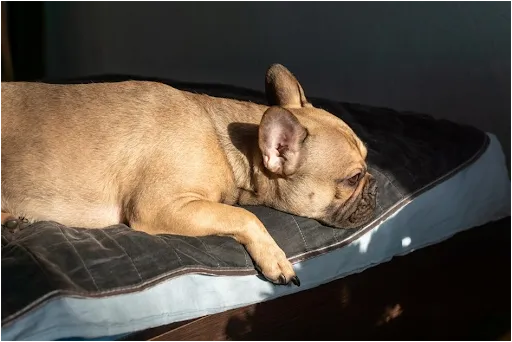

For many pet owners, finding the perfect dog bed feels like an impossible mission, especially when you have a dog that loves to chew. A standard bed often meets a quick and destructive end, leaving you frustrated and your dog without a comfortable place to rest. Investing in a chew-proof dog bed can save you time, money, and hassle while keeping your furry friend happy.
However, not all chew-resistant beds are built to the same standard. How do you know which one to choose? This guide dives into the key features of a chew-proof dog bed, why dogs chew, and how to maintain your investment for years to come.
Before you invest in a chew proof dog bed, it’s important to understand your dog’s chewing behavior. Not all chewing stems from the same reasons, and identifying the cause can help you address the problem effectively.
Not all chew-resistant dog beds are built equally. When shopping for one, pay special attention to the following:
The material of the bed is arguably the most important factor in determining its chew-proof ability. Look for beds made with:
Structural design plays a huge role in how long a bed can withstand your dog’s chewing habits. Look for these features:
The design of the bed should align with your dog’s behavior and comfort needs while discouraging chewing:
By focusing on materials, construction, and design, you set yourself up for success in finding a bed that can endure your dog’s habits.
Even the toughest of beds can face challenges if your dog is determined to chew. Pairing a chew-resistant bed with behavior training can help ensure it lasts longer. Here’s how you can help your dog stay off the destructive path:
Provide your dog with appropriate chew toys or bones. Whenever they try to chew on their bed, calmly redirect their attention to the designated chew toy.
Praise your dog whenever they lie on their bed without chewing. Positive reinforcement encourages good behavior without stressing your pet.
Boredom often leads to destructive chewing. Ensure your dog gets plenty of exercise and mental engagement through play, training, or puzzle toys.
Some pet-safe sprays are designed to deter dogs from chewing on furniture or other items. Applying this to the borders of the bed can act as a thoughtful precaution.
When introducing a new bed, keep an eye on your dog until they’re familiar with it. This prevents destructive behavior from becoming habitual.
Chew-proof or not, proper maintenance is key to prolonging the life of your investment. Follow these tips to keep your dog’s bed in great shape for years:
Look for beds with removable, machine-washable covers. Regular cleaning maintains hygiene and helps prevent odors, especially if your dog is prone to accidents.
Periodically inspect the bed for small tears or vulnerable areas. Treating minor damage early can stop a full-on disaster later.
Dogs can grow attached to chewing on one spot. Rotating different beds or using a secondary cover can minimize chewing tendencies.
Some fabric protectors can add a layer of durability to the material, reducing wear and tear.
A chew-proof dog bed isn’t just about durability; it’s about ensuring that you and your dog enjoy greater peace of mind (and a better night’s sleep). By identifying your dog’s chewing habits, choosing the right materials and design, and maintaining the bed with care, you’ll save yourself the frustration of constantly replacing damaged products.